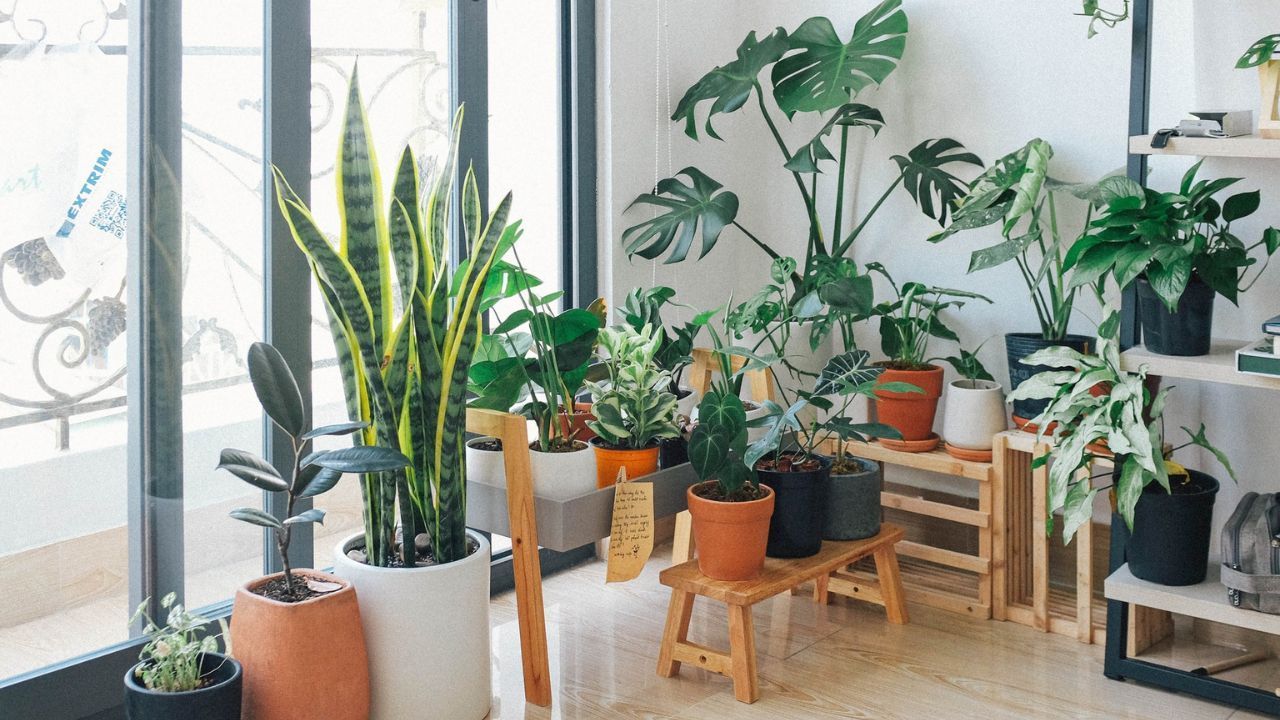

Articles
How To Grow Indoor Garden
Modified: January 20, 2024
Learn the secrets of successful indoor gardening with our step-by-step guide. From choosing the right plants to providing proper care, boost your gardening skills and create a lush indoor garden effortlessly!
(Many of the links in this article redirect to a specific reviewed product. Your purchase of these products through affiliate links helps to generate commission for Storables.com, at no extra cost. Learn more)
Introduction
Welcome to the exciting world of indoor gardening! Whether you have a green thumb or are a beginner in the gardening realm, creating an indoor garden can bring joy, beauty, and numerous benefits to your living space. In this article, we will explore the wonders of indoor gardening and provide you with tips and techniques to help you grow your own thriving garden indoors.
Indoor gardening offers a unique opportunity to bring nature indoors, transforming your living space into a vibrant oasis. It allows you to enjoy the pleasures of gardening year-round, regardless of weather conditions or the size of your outdoor space. Additionally, indoor plants have been proven to improve air quality, reduce stress levels, and enhance overall well-being. They can also serve as beautiful decorative elements, adding life and color to any room.
Whether you live in a cozy apartment or a spacious house, there is always room for an indoor garden. Even the tiniest of spaces can be transformed into a lush green haven with the right selection of plants and containers. With a little bit of knowledge and creativity, anyone can experience the joy of gardening, even without a backyard.
Indoor gardening offers a wide variety of plant options. From leafy greens and succulents to colorful flowers and fragrant herbs, there are plants to suit every taste and preference. You can create a mini herb garden in your kitchen, a cascading vine display in your living room, or a peaceful sanctuary with a collection of tropical plants.
Not only does indoor gardening allow you to enjoy the aesthetic beauty of plants, but it also provides an opportunity to grow your own fresh produce. Imagine having a bountiful supply of herbs, salad greens, and even tomatoes, right at your fingertips. With proper care and attention, you can harvest your own homegrown produce and savor the taste of nature’s bounty.
Whether you are a seasoned gardener or a beginner, this article will guide you through the fundamentals of indoor gardening. You will learn about choosing the right plants, selecting suitable containers, providing adequate lighting, watering techniques, managing temperature and humidity, fertilizing, pest control, pruning, and common troubleshooting tips. By applying these practices, you will be well-equipped to create and maintain a thriving indoor garden in your home or office space.
So, let’s dig in and discover the wonders of indoor gardening!
Key Takeaways:
- Transform your indoor space into a vibrant oasis with the joy, beauty, and benefits of indoor gardening. From lush foliage to fresh produce, the possibilities are endless!
- Master the art of indoor gardening by choosing the right plants, providing optimal care, and troubleshooting common issues. Enjoy the rewarding journey of nurturing your own green oasis.
Read more: How To Grow An Indoor Garden
Benefits of Indoor Gardening
Indoor gardening offers a multitude of benefits that go beyond the sheer beauty and enjoyment of having plants in your living space. Let’s explore some of the incredible advantages of growing an indoor garden.
- Improved Air Quality: Indoor plants act as natural air purifiers, removing harmful pollutants from the atmosphere. They absorb carbon dioxide and release oxygen, creating a healthier indoor environment. Studies have shown that indoor gardens can help reduce the risk of respiratory ailments, allergies, and asthma by filtering out toxins.
- Stress Relief and Mental Well-being: Surrounding yourself with plants has a calming effect on the mind and can reduce stress levels. Indoor gardening provides an opportunity to connect with nature and engage in a therapeutic activity. The soothing presence of plants can uplift your mood and enhance your overall well-being.
- Enhanced Productivity: Having an indoor garden in your workspace has been proven to increase productivity and creativity. Plants create a sense of calmness and improve focus, leading to better performance and efficiency. They also help reduce noise levels and create a more peaceful working environment.
- Year-Round Gardening: Indoor gardening allows you to enjoy the pleasures of gardening all year round, regardless of the season. You don’t have to wait for warm weather or worry about frost and extreme temperatures. With the right conditions, you can continue growing and nurturing your plants throughout the year.
- Accessible Fresh Herbs and Produce: Growing your own herbs and vegetables indoors gives you easy access to organic and flavorful produce. Imagine snipping fresh herbs for your favorite recipes or plucking cherry tomatoes off the vine right in your kitchen. Indoor gardens provide a convenient and sustainable way to incorporate fresh ingredients into your daily meals.
- Decoration and Aesthetics: Indoor plants add life, color, and beauty to any room or space. They can be used as decorative elements to enhance the ambiance and create a tranquil atmosphere. From cascading vines and vibrant flowers to lush foliage, indoor gardens can transform any space into a visually pleasing oasis.
- Learning and Connection with Nature: Indoor gardening provides an educational opportunity for both adults and children. It allows you to observe the growth and development of plants up close, teaching valuable lessons about the natural world. For children, it can be a wonderful way to foster a love for nature and instill a sense of responsibility and care.
These are just a few of the many benefits of indoor gardening. Whether you are seeking improved air quality, stress relief, a year-round gardening experience, fresh produce, or simply the joy of nurturing plants, an indoor garden can bring immense rewards to your life. So, what are you waiting for? Get started on your indoor gardening journey and reap the abundant benefits it offers.
Choosing the Right Indoor Plants
When it comes to indoor gardening, selecting the right plants is crucial for success. Not all plants thrive indoors, as they have different light, temperature, and humidity requirements. Here are some factors to consider when choosing the right indoor plants for your space:
- Light Requirements: Assess the available light in your indoor space. Some plants, such as succulents and cacti, thrive in bright, direct sunlight, while others prefer indirect or low light conditions. Consider the orientation of your windows and the amount of natural light that filters into the room. This will help you determine which plants will flourish in your specific environment.
- Space and Size: Take into account the size and space available for your indoor garden. Determine whether you have ample floor space or if you need to maximize vertical space. Consider the height and spread of the plants you choose to ensure they fit in your designated area without overcrowding. Additionally, some plants, like trailing vines or hanging plants, are ideal for smaller spaces or for adding dimension to the room.
- Temperature and Humidity: Different plants have varying temperature and humidity requirements. Some prefer warmer conditions, while others thrive in cooler environments. Understand the average temperature and humidity levels in your home or office, and select plants that align with these conditions. Investing in a quality thermometer and hygrometer can help you monitor these factors accurately.
- Maintenance and Care: Consider the amount of time and effort you are willing to invest in caring for your indoor plants. Some plants require frequent watering and misting, while others are more drought-tolerant. If you have a busy lifestyle or are a beginner gardener, opting for low-maintenance plants like snake plants or pothos might be a wise choice.
- Aesthetic Appeal: Think about the overall aesthetic you want to achieve in your indoor space. Decide whether you prefer lush green foliage, colorful flowers, or a mix of different plant types. Balance the visual impact of your plants with the decor and style of the room. Consider factors like leaf shape, texture, and color to create a harmonious and visually appealing indoor garden.
- Pet and Child Safety: If you have pets or young children, be cautious about the plants you choose. Some plants can be toxic if ingested and may pose a risk to the well-being of your loved ones. Research pet-friendly and child-safe plants to ensure a safe environment for everyone.
Popular indoor plants that are known for their adaptability and ease of care include spider plants, pothos, snake plants, peace lilies, and ZZ plants. These plants can tolerate a variety of light conditions and are great choices for beginners.
Remember, each indoor space is unique, and plants may require adjustments and experimentation to find the perfect fit. Take your time to research and choose plants that align with your specific indoor conditions and personal preferences. By selecting the right indoor plants, you lay the foundation for a thriving and beautiful indoor garden.
Selecting the Right Containers
Choosing the proper containers is an essential aspect of indoor gardening. The right containers not only provide a home for your plants but also contribute to their overall health and growth. Here are some factors to consider when selecting the right containers for your indoor plants:
- Drainage: Proper drainage is crucial to prevent waterlogging and root rot. Look for containers with drainage holes at the bottom to allow excess water to escape. If you fall in love with a container that doesn’t have drainage holes, you can either drill holes in the bottom or use a liner with drainage holes to ensure adequate water flow.
- Size: The size of the container should accommodate the growth potential of the plant. Consider the mature size of the plant and select a container that allows enough room for the roots to spread and develop. A container that is too small can restrict root growth and lead to stunted plants.
- Material: Containers come in various materials, including plastic, terracotta, ceramic, and fiberglass. Each material has its pros and cons. Plastic containers are lightweight and retain moisture well, while terracotta containers provide better breathability for the roots. Choose a material that suits the specific needs of your plants and complements the aesthetic of your indoor space.
- Aesthetics: The containers you choose should complement the overall aesthetic of your indoor space. Select containers that align with your personal style and the decor of the room. Consider factors like color, shape, and texture to create a visually pleasing and cohesive indoor garden.
- Functionality: Evaluate the functionality of the containers. Consider factors like weight, mobility, and ease of handling. Lightweight containers are easier to move around, whereas larger and heavier containers may require a more permanent location. If you plan to have a hanging garden, choose containers with built-in hooks or opt for containers that can be easily mounted.
- Grouping and Arrangement: Consider how you plan to arrange your plants. Grouping plants with similar light and humidity requirements in the same container can simplify care and create a visually appealing display. Additionally, consider using decorative trays or saucers to collect excess water and prevent damage to your indoor surfaces.
When repotting your plants, ensure that the new container has enough space for the roots to grow and that the potting mix provides adequate nutrients and drainage. Avoid using containers that are much larger than the root system, as this can lead to overwatering and soil becoming excessively wet. A general rule of thumb is to choose a container that is one or two sizes larger than the current container.
Remember to clean your containers before using them to prevent the spread of pests and diseases. Rinse the containers with a mild bleach solution and allow them to dry before adding soil and plants.
By carefully considering these factors when selecting containers, you will provide your indoor plants with a comfortable and healthy environment to thrive and grow. The right containers will not only enhance the beauty of your indoor garden but also contribute to the overall success of your plants.
Providing Adequate Lighting
Light is one of the most critical factors for the growth and development of indoor plants. Since natural sunlight may not always be sufficient, it is crucial to provide adequate lighting for your indoor garden. Here are some important considerations when it comes to lighting:
- Identify Natural Light Sources: Assess the natural light sources in your indoor space. Take note of the direction of windows and the amount of sunlight they receive throughout the day. South-facing windows generally receive the most intense sunlight, while north-facing windows receive the least. East and west-facing windows fall somewhere in between. Understanding the natural light conditions will help you determine where to place your plants for optimal growth.
- Know Your Plant’s Light Requirements: Different plants have varying light requirements. Some plants thrive in direct sunlight, while others prefer indirect or low-light conditions. Research the specific light needs of the plants you have or plan to grow and choose suitable locations accordingly. Leafy green plants generally require moderate to bright indirect light, while flowering plants often benefit from brighter, direct light.
- Supplement with Artificial Lighting: In spaces with limited natural light, supplementing with artificial lighting is essential. There are various types of indoor grow lights available, including fluorescent, LED, and high-intensity discharge (HID) lights. LED lights are becoming increasingly popular due to their energy efficiency and the ability to emit specific light wavelengths that plants need for photosynthesis. When using artificial lighting, position the lights at an appropriate distance from the plants and adjust the duration of light exposure based on the plant’s specific needs.
- Consider Light Intensity and Duration: The intensity and duration of light exposure are crucial for plant growth. Most indoor plants require 12-16 hours of light per day. Ensure that the light intensity is adequate but not excessively bright, as this can lead to leaf burn. Monitor the distance between the light source and the plants to prevent heat stress and damage.
- Rotate Plants: To ensure even light distribution and balanced growth, periodically rotate your plants. This helps prevent plants from leaning towards the light source and ensures that all parts of the plant receive adequate light. Rotate the plants every few weeks, especially if they are placed near a window where the light intensity may vary throughout the day.
- Monitor for Light Deficiencies or Excesses: Pay attention to your plants’ responses to light. If you notice elongated stems, pale or yellowing leaves, or lack of growth, it may indicate insufficient light. On the other hand, if the leaves are turning brown or crisping, it may indicate excessive light exposure or heat stress. Adjust the positioning and intensity of the lights as needed to provide the optimal light conditions for your plants.
Remember that light requirements can vary between plant species, so it’s essential to research and understand the specific needs of your plants. Regular observation and adjustment of lighting conditions will help you maintain healthy and flourishing indoor plants.
Providing adequate lighting is a key aspect of indoor gardening. By carefully considering the natural light in your space and supplementing with artificial lighting when necessary, you can create an optimal environment for your plants to thrive and grow.
Understanding Proper Watering Techniques
Watering is a fundamental aspect of caring for indoor plants, and mastering proper watering techniques is essential for their health and vitality. Here are some important factors to consider when it comes to watering your indoor garden:
- Observe and Understand Your Plants: Each plant has unique water requirements. Some plants prefer evenly moist soil, while others prefer slightly drier conditions. Observe your plants closely and learn to recognize the signs of when they need water. Wilting, dry soil, or leaves losing their turgidity are indicators that your plants may be thirsty.
- Water Quality: The quality of water you use can impact the health of your indoor plants. Ideally, use room temperature, filtered water. Tap water may contain chlorine or minerals that can accumulate in the soil over time. If tap water is your only option, allow it to sit out for 24 hours before using it to let the chlorine dissipate.
- Watering Frequency: Avoid watering on a fixed schedule, as each plant’s water needs can vary depending on factors such as light intensity, temperature, humidity, and plant size. Instead, monitor the moisture levels in the soil and water your plants when the top inch of the soil feels dry. Use your finger or a moisture meter to gauge the soil moisture level.
- Watering Methods: There are various methods to water indoor plants, including pouring water directly onto the soil, using a watering can or a watering bottle, or placing the plant in a tray of water to allow it to soak up moisture from the bottom (bottom watering). The choice of method depends on the plant’s individual needs, the size of the container, and personal preference. Avoid overhead watering for plants that are susceptible to fungal diseases or those with delicate foliage.
- Avoid Overwatering: Overwatering is one of the most common mistakes in indoor gardening. It can lead to root rot, fungal diseases, and other issues. Make sure that excess water can drain out of the container to prevent waterlogged soil. Allow the soil to dry slightly between watering sessions rather than keeping it constantly moist.
- Proper Watering Amount: When watering your plants, aim to saturate the entire root ball. Water until you see water coming out of the drainage holes at the bottom of the container. This ensures that water reaches the deepest roots and promotes healthy growth. Discard any excess water that accumulates in the saucer after watering.
- Humidity Considerations: Indoor environments can sometimes be drier than the optimal conditions for certain plants. Boosting humidity levels around your plants can help alleviate moisture-related stress. You can mist the foliage, place a tray of water nearby, or use a humidifier to increase the humidity level. However, be cautious with plants that are prone to fungal diseases, as excessive humidity can encourage their growth.
Remember that it’s better to underwater slightly than to overwater. Plants can often recover from slight drought stress, but it is more challenging to save a plant that has been overwatered. Pay attention to the specific needs of your plants, adjust your watering routine accordingly, and always aim for moderation and balance.
Understanding proper watering techniques is crucial for the overall health and success of your indoor garden. By providing the right amount of water at the right time, you will help your plants thrive and avoid common watering-related issues.
When growing an indoor garden, make sure to provide adequate light, water, and nutrients for your plants. Consider using grow lights and a good quality potting mix to support healthy growth.
Maintaining the Right Temperature and Humidity
Temperature and humidity play vital roles in the health and well-being of your indoor plants. Creating the ideal environment with the right temperature and humidity levels will help your plants thrive. Here are some key considerations for maintaining the optimal conditions:
- Temperature Range: Most indoor plants prefer temperatures between 60°F and 75°F (15°C to 24°C). However, each plant has its specific temperature requirements. Research the temperature preferences of your plants to ensure they are within their preferred range. Avoid placing plants near drafts, heating vents, or air conditioning units, as extreme temperature fluctuations can stress or damage them.
- Nighttime Temperature Drop: Many plants benefit from a slight drop in temperature during the nighttime. This temperature fluctuation can mimic their natural environment and promote healthy growth. Maintain a nighttime temperature that is slightly cooler than the daytime temperature, but avoid drastic changes that can shock or harm the plants.
- Humidity Levels: Humidity refers to the amount of moisture present in the air. Different plants have different humidity preferences. While some plants thrive in higher humidity levels, others can tolerate drier conditions. To increase humidity around your plants, you can place a tray of water near them, use a humidifier, or group plants together to create a microclimate. Regularly misting the leaves with room temperature water can also help raise humidity levels.
- Dry Air and Central Heating: During the winter months or in areas with dry climates, air indoors tends to become dry due to central heating systems. Dry air can cause leaf browning, tip dieback, and overall stress to plants. Increase humidity by using a humidifier or placing a water-filled tray near the plants to mitigate the effects of dry air.
- Monitoring Temperature and Humidity: Invest in a thermometer and hygrometer to monitor the temperature and humidity levels in your indoor space. These instruments will help you ensure that the conditions remain within the acceptable range for your plants. Place them near your plants or in the areas you want to monitor.
- Heaters and Cooling Devices: If you need to use heaters or cooling devices, be cautious about their placement in relation to your plants. Direct exposure to heat sources or cold drafts can be detrimental to your indoor garden. Maintain a safe distance to prevent overheating or chilling of the plants.
- Temperature and Humidity Tolerant Plants: If you are struggling to maintain specific temperature or humidity levels, consider selecting plants that are known to be more tolerant of varied conditions. There are many plant varieties available that can adapt well to a range of temperature and humidity levels.
Remember that some plants may go into dormancy during certain seasons, requiring a slight adjustment in temperature and humidity. Research the specific needs of your plants and provide the necessary care accordingly.
By maintaining the right temperature and humidity levels, you will create a favorable environment for your indoor plants. This will help them thrive, prevent stress-related issues, and ensure their overall well-being and vitality.
Fertilizing Indoor Plants
Fertilizing is an essential aspect of caring for indoor plants to ensure they receive the necessary nutrients for healthy growth and development. Here are some key considerations when it comes to fertilizing your indoor garden:
- Choose the Right Fertilizer: Select a fertilizer that is formulated specifically for indoor plants or houseplants. There are different types of fertilizers available, including liquid, granular, and slow-release formulations. Choose a balanced fertilizer with equal proportions of nitrogen (N), phosphorus (P), and potassium (K), expressed as N-P-K ratios (e.g., 10-10-10 or 20-20-20). This balanced blend provides essential macronutrients for overall plant health.
- Follow the Label Instructions: Carefully read and follow the instructions provided on the fertilizer packaging. Different fertilizers may have specific guidelines regarding application rates, frequency, and dilution ratios. Overfertilizing can cause nutrient burn and harm your plants, so it is important to apply the fertilizer as directed.
- Timing of Fertilization: During the active growing season, which typically occurs in spring and summer, indoor plants will benefit from more frequent fertilization. Reduce or suspend fertilization during the dormant period, which often happens in fall and winter when plant growth slows down. It is crucial to adjust your fertilization schedule according to the specific needs of your plants.
- Application Methods: There are two main methods for applying fertilizer: root feeding and foliar feeding. Root feeding involves adding fertilizer directly to the soil around the plant’s root zone. This can be done by sprinkling granular fertilizers on the soil surface or by diluting liquid fertilizers and pouring them into the soil. Foliar feeding involves spraying a dilute fertilizer solution onto the leaves. While foliar feeding can provide a quick nutrient boost, root feeding is the primary method for long-term nutrient supply.
- Watering After Fertilization: After applying fertilizer, make sure to water your plants thoroughly. This helps to distribute the nutrients evenly and prevents the risk of fertilizer burn. Watering also prevents the accumulation of excess salts from the fertilizer in the soil.
- Organic Fertilizers: If you prefer an organic approach, consider using organic fertilizers like compost, worm castings, or seaweed extracts. These natural fertilizers provide a slow-release of nutrients and help improve soil structure and microbial activity. Organic fertilizers are typically milder and less likely to burn plants if used correctly.
- Monitor Plant Response: Pay close attention to your plants’ response to fertilization. Healthy plants will exhibit vigorous growth, lush foliage, and vibrant colors. However, if you notice signs of nutrient deficiencies or excesses, such as yellowing leaves, stunted growth, or burnt leaf tips, adjust your fertilization routine accordingly to avoid further damage.
- Regular Soil Maintenance: Over time, the soil in your containers may become depleted of nutrients or develop salt buildup from fertilizers. To maintain healthy plant growth, periodically replace the top layer of soil or refresh it with a nutrient-rich compost mixture. This practice will ensure a continuous supply of essential nutrients for your indoor plants.
Remember that fertilizing is an addition to a proper watering and light regimen. Maintain a balanced approach to provide your indoor plants with the nutrients they need without overstimulating their growth. Regular observation and adjustment of your fertilization routine will help you keep your indoor garden thriving and lush.
By incorporating proper fertilization techniques into your indoor plant care routine, you will support the overall health and vitality of your plants, leading to beautiful and flourishing indoor garden.
Preventing and Managing Pests and Diseases
Pests and diseases can pose a threat to the health and well-being of indoor plants. Preventing and managing these issues is crucial to ensure the longevity and vitality of your indoor garden. Here are some important measures to help you prevent and control pests and diseases:
- Inspect New Plants: Before bringing new plants into your indoor space, thoroughly inspect them for any signs of pests or diseases. Check the leaves, stems, and roots for pests like aphids, spider mites, or mealybugs, as well as signs of fungal or bacterial infections. Quarantine new plants for a few weeks to monitor them before integrating them with your existing plant collection.
- Maintain Cleanliness: Keep your indoor space clean and free of debris, fallen leaves, or dead plant material. These can provide breeding grounds for pests and harbor disease-causing pathogens. Regularly remove any dead or decaying plant parts to prevent the spread of diseases.
- Proper Watering: Overwatering can create an environment conducive to fungus gnats and root rot. Practice proper watering techniques, allowing the soil to dry slightly between waterings. Avoid wetting the leaves excessively during watering, as this can encourage fungal growth.
- Air Circulation: Ensure proper air circulation around your indoor plants. Stagnant air can create favorable conditions for pests and diseases. Use fans or open windows occasionally to improve ventilation. However, be cautious of cold drafts or excessive airflow that can stress your plants.
- Plant Placement: Be mindful of the placement of your plants. Crowded and tightly spaced plants can create a breeding ground for pests and make it difficult to properly inspect and diagnose issues. Provide enough space between plants to promote air circulation and access for maintenance.
- Natural Pest Control: Consider natural pest control methods before resorting to chemical pesticides. Introduce beneficial insects like ladybugs, lacewings, or predatory mites that feed on common pests. Neem oil and insecticidal soaps are effective and eco-friendly options for controlling soft-bodied insects. Regularly monitor your plants for signs of pests and take swift action if detected.
- Isolation: When an indoor plant shows signs of pests or diseases, isolate it from your healthy plants to prevent the spread of infestations or infections. Treat the affected plant promptly and monitor it closely until the issue is resolved.
- Hygienic Practices: Maintain good hygiene practices by regularly cleaning and sanitizing your gardening tools. Disinfect pruning tools between each use and avoid cross-contamination. This prevents the transmission of pathogens from one plant to another.
- Early Detection and Treatment: Regularly inspect your plants for any signs of pests or diseases. Look for abnormalities in leaf color, spots, holes, webbing, or pest activity. Act quickly if you detect any issues to prevent further spread and damage. Identify the problem accurately and treat it with the appropriate remedy or consult a professional if necessary.
- Stay Informed: Keep yourself updated on common pests and diseases that affect indoor plants. Research about the specific plants you have and their vulnerability to certain issues. Being proactive and well-informed will help you prevent, identify, and address potential problems efficiently.
Remember that maintaining a healthy indoor garden requires consistent care and vigilance. Regular monitoring, prompt action, and preventive measures are vital for preventing and managing pests and diseases effectively.
By implementing these preventative measures and promptly addressing any issues that arise, you can protect the health and beauty of your indoor plants and ensure a thriving, pest-free environment for your indoor garden.
Pruning and Trimming Indoor Plants
Pruning and trimming are essential practices for maintaining the health, shape, and appearance of your indoor plants. Proper pruning techniques help promote growth, remove dead or damaged parts, and ensure a well-balanced and attractive indoor garden. Here are some guidelines for pruning and trimming your indoor plants:
- Tools: Invest in a good quality pair of pruning shears or scissors specifically designed for pruning plants. Ensure that the blades are sharp and clean to make precise cuts and minimize damage to the plant.
- Reasons for Pruning: Pruning serves several purposes, including removing dead or yellowed leaves, trimming back overgrown branches, encouraging bushier growth, and shaping the plant. Additionally, pruning can help improve air circulation, prevent diseases, and redirect the plant’s energy to promote healthier, more vibrant growth.
- Identify Pruning Needs: Regularly inspect your indoor plants to identify areas that require pruning. Look for dead, yellowed, or diseased leaves that should be removed. Remove any crossed or overcrowded branches that can lead to rubbing and damage. Additionally, assess the overall shape and size of the plant and decide if shaping or thinning is necessary.
- Proper Technique: When pruning, make clean cuts just above a leaf node or bud. Avoid leaving stubs, as they can become entry points for pests and diseases. Use sharp, clean cuts at a slight angle to promote healing and prevent water from sitting on the cut surface, which can lead to rot.
- Timing: The best time to prune indoor plants is during their active growth period, which is typically in the spring or early summer. This allows the plants to recover more quickly and encourages new growth. However, you can prune your indoor plants at any time of the year if necessary, especially to remove dead or diseased parts.
- Pruning Guidelines: When it comes to pruning specific plants, follow the guidelines for that particular species. Some plants require minimal pruning, while others benefit from more extensive pruning to maintain their shape or encourage blooming. Research the specific pruning needs of your plants to ensure you are pruning them correctly.
- Avoid Over-Pruning: While pruning is essential, be careful not to overdo it. Avoid removing more than one-third of the plant’s foliage at any given time, as this can stress the plant and hinder its ability to recover. Start with minimal pruning and assess the plant’s response before proceeding further.
- Training and Shaping: Pruning can help shape your indoor plants into desired forms. Pinching back the tips of growing stems can encourage branching and create bushier growth. Regularly trim leggy or elongated branches to maintain a compact and fuller appearance. As the plant grows, consider using stakes or trellises to provide support and guide the growth direction.
- Cleanliness and Sterilization: After each pruning session, clean the pruning tools to prevent the spread of diseases or pathogens. Use rubbing alcohol or a household disinfectant to sterilize the blades. This helps ensure that you are making clean cuts and avoiding any potential contamination.
- Monitor Plant Response: After pruning, closely observe how your plants respond. Healthy plants will generally exhibit new growth and improved appearance. However, if you notice signs of stress, such as wilting or browning of leaves, reassess your pruning techniques and adjust your approach if necessary.
Remember that every plant is unique, and pruning requirements can vary. Take the time to become familiar with your specific plant species and their pruning needs. With patience and practice, you can master the art of pruning and trimming, enhancing the health and beauty of your indoor plants.
By implementing proper pruning techniques, you will help your indoor plants maintain their shape, stimulate new growth, and create a well-maintained and aesthetically pleasing indoor garden.
Troubleshooting Common Indoor Gardening Issues
Indoor gardening can sometimes present challenges, but with proper knowledge and troubleshooting techniques, you can overcome common issues that arise. Here are some common indoor gardening problems and tips on how to troubleshoot them:
- Yellowing Leaves: Yellowing leaves can be a sign of various issues, including overwatering, underwatering, nutrient deficiencies, or pests. Assess the moisture level of the soil and adjust your watering accordingly. Ensure your plants are receiving adequate light and nutrients. If pests are present, take appropriate measures to control them.
- Wilting: Wilting is often an indicator of either underwatering or overwatering. Check the moisture level of the soil, and if it’s excessively dry, water the plant thoroughly. On the other hand, if the soil is constantly wet, adjust your watering frequency. Ensure there is proper drainage to prevent waterlogging.
- Fungal Diseases: Fungal diseases, such as powdery mildew or root rot, can occur in indoor plants, particularly in high humidity or overwatered conditions. Increase air circulation, reduce humidity levels, and avoid overwatering. If you notice signs of fungal growth, remove affected plant parts and treat with a fungicide if necessary.
- Pests: Common pests that can affect indoor plants include aphids, spider mites, mealybugs, and fungus gnats. Regularly inspect your plants for signs of pests, such as webbing, tiny insects, or distorted growth. Use natural pest control methods like neem oil or insecticidal soap, or introduce beneficial insects to help manage pest infestations.
- Leggy Growth: Leggy growth occurs when your plants have long, weak stems and sparse foliage. It is often caused by insufficient light. Move your plants to a brighter location or supplement with artificial grow lights. Prune back leggy growth to encourage bushier growth and promote a more compact appearance.
- Lack of Blooming: If your flowering plants are not producing blooms, it could be due to insufficient light, inadequate nutrients, or improper pruning. Ensure your plants are receiving enough light, provide them with a balanced fertilizer, and avoid over-pruning, especially during their blooming period.
- Leaf Browning or Leaf Tip Burn: Browning or leaf tip burn can be caused by several factors, including underwatering, over-fertilization, exposure to direct sunlight, or excessively dry air. Assess your watering and fertilization practices, ensure your plants are not receiving too much direct sunlight, and increase humidity levels if necessary.
- Stunted Growth: Stunted growth can result from factors such as inadequate light, nutrient deficiencies, compacted or poor-quality soil, or root-bound plants. Increase the amount and intensity of light, provide proper fertilization, ensure your plants are in well-draining soil, and consider repotting if root-bound.
- Yellowing of Lower Leaves: Yellowing of lower leaves is often a normal part of the aging process for many plants. However, if the yellowing is excessive or accompanied by other signs of distress, it may indicate nutrient deficiencies, overwatering, or inadequate light. Adjust your fertilization, watering, and lighting practices accordingly.
- Plant Dropping Leaves: Leaf drop can occur due to stress, overwatering, underwatering, or changes in environmental conditions. Identify and address the underlying cause of stress, ensure proper watering practices, and maintain consistent environmental conditions to prevent excessive leaf dropping.
Remember that troubleshooting indoor gardening issues requires observation, analysis, and adjustments based on the specific needs of your plants. Pay attention to the signs your plants exhibit, and take proactive steps to resolve any issues as soon as possible.
By understanding and addressing common indoor gardening problems, you can maintain healthy and thriving indoor plants, creating a beautiful and rewarding indoor garden.
Conclusion
Congratulations on completing this comprehensive guide to indoor gardening! You now have a wealth of knowledge to help you create and maintain a thriving indoor garden. By incorporating the tips and techniques discussed in this article, you can enjoy the beauty, benefits, and satisfaction of growing plants in your indoor space.
Indoor gardening offers a world of possibilities. From lush foliage to vibrant flowers, from fresh herbs to bountiful harvests, your indoor garden can be a source of joy, inspiration, and connection with nature. The benefits of indoor gardening extend beyond aesthetics, with improved air quality, stress relief, increased productivity, and accessible fresh produce right at your fingertips.
Choosing the right indoor plants, selecting suitable containers, providing adequate lighting, understanding proper watering techniques, maintaining optimal temperature and humidity levels, fertilizing appropriately, preventing and managing pests and diseases, pruning and trimming, and troubleshooting common issues are all key elements to success.
Remember to observe and listen to your plants, as they will communicate their needs through their growth patterns and appearance. Adjust your care routine as needed to ensure your plants are receiving the ideal conditions for their health and development. Every plant is unique, and with time, patience, and a little experimentation, you will become an expert in caring for your indoor garden.
Lastly, enjoy the journey of indoor gardening. The process of nurturing plants, watching them grow, and witnessing their beauty is truly rewarding. Take moments to connect with nature and find solace in the green oasis you’ve created within your own home or office.
So, grab your gardening tools, plant your seeds, and embark on this exciting adventure of indoor gardening. Your green thumb and passion for plants will flourish, as will the beauty and vitality of your indoor garden. Happy gardening!
Frequently Asked Questions about How To Grow Indoor Garden
Was this page helpful?
At Storables.com, we guarantee accurate and reliable information. Our content, validated by Expert Board Contributors, is crafted following stringent Editorial Policies. We're committed to providing you with well-researched, expert-backed insights for all your informational needs.
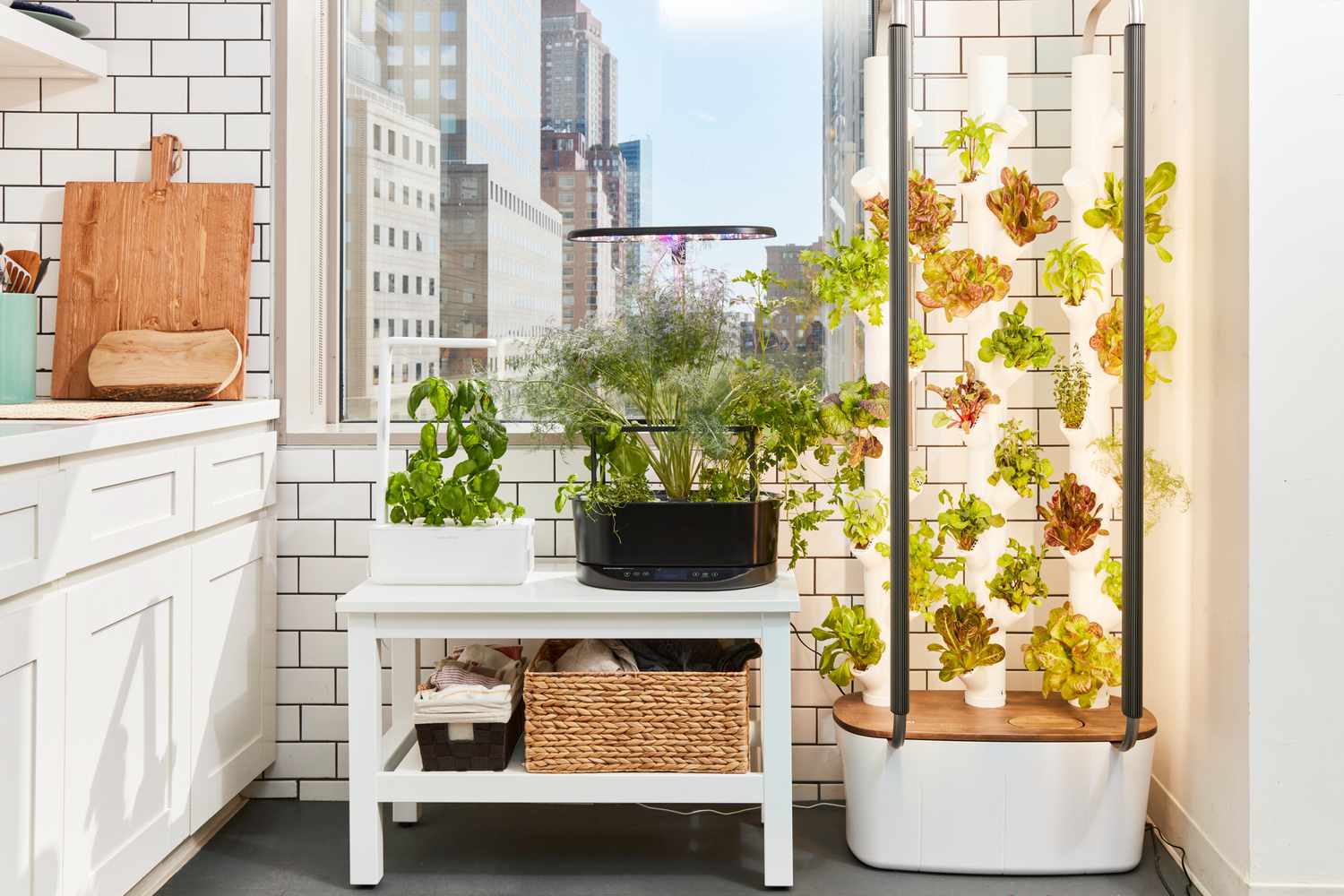
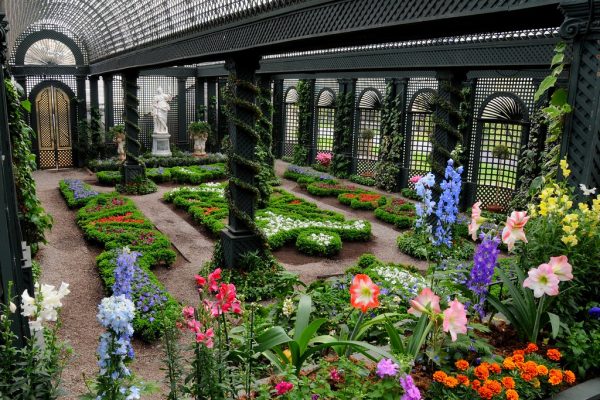
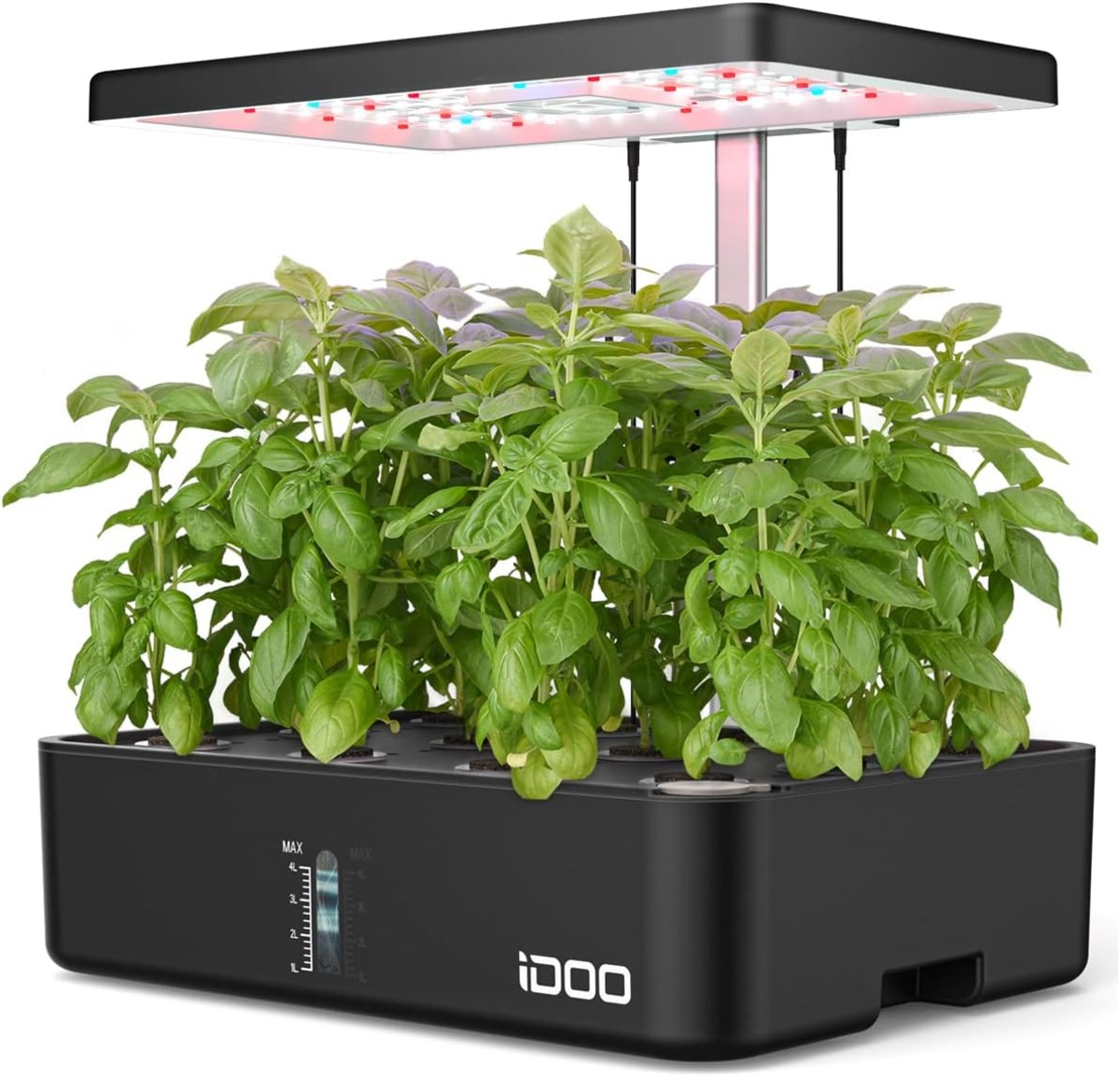
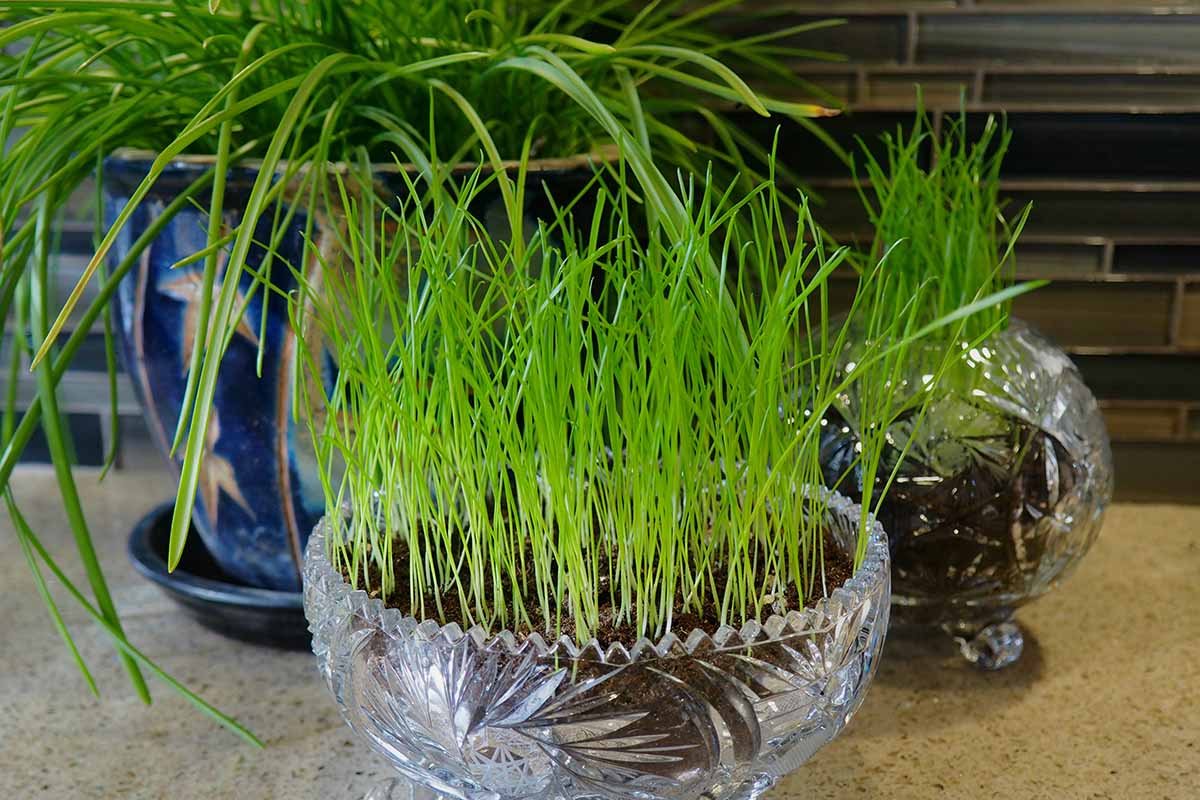
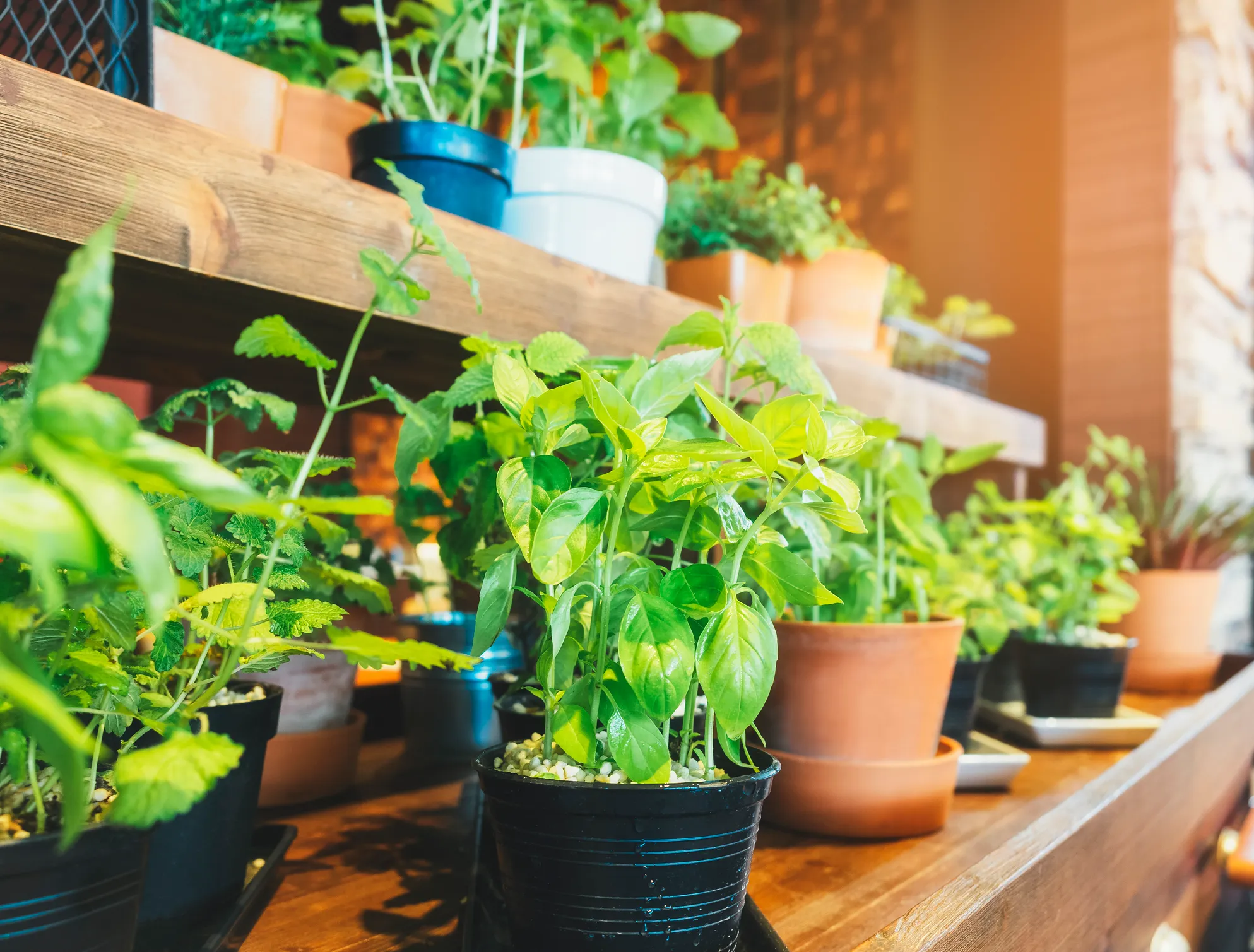
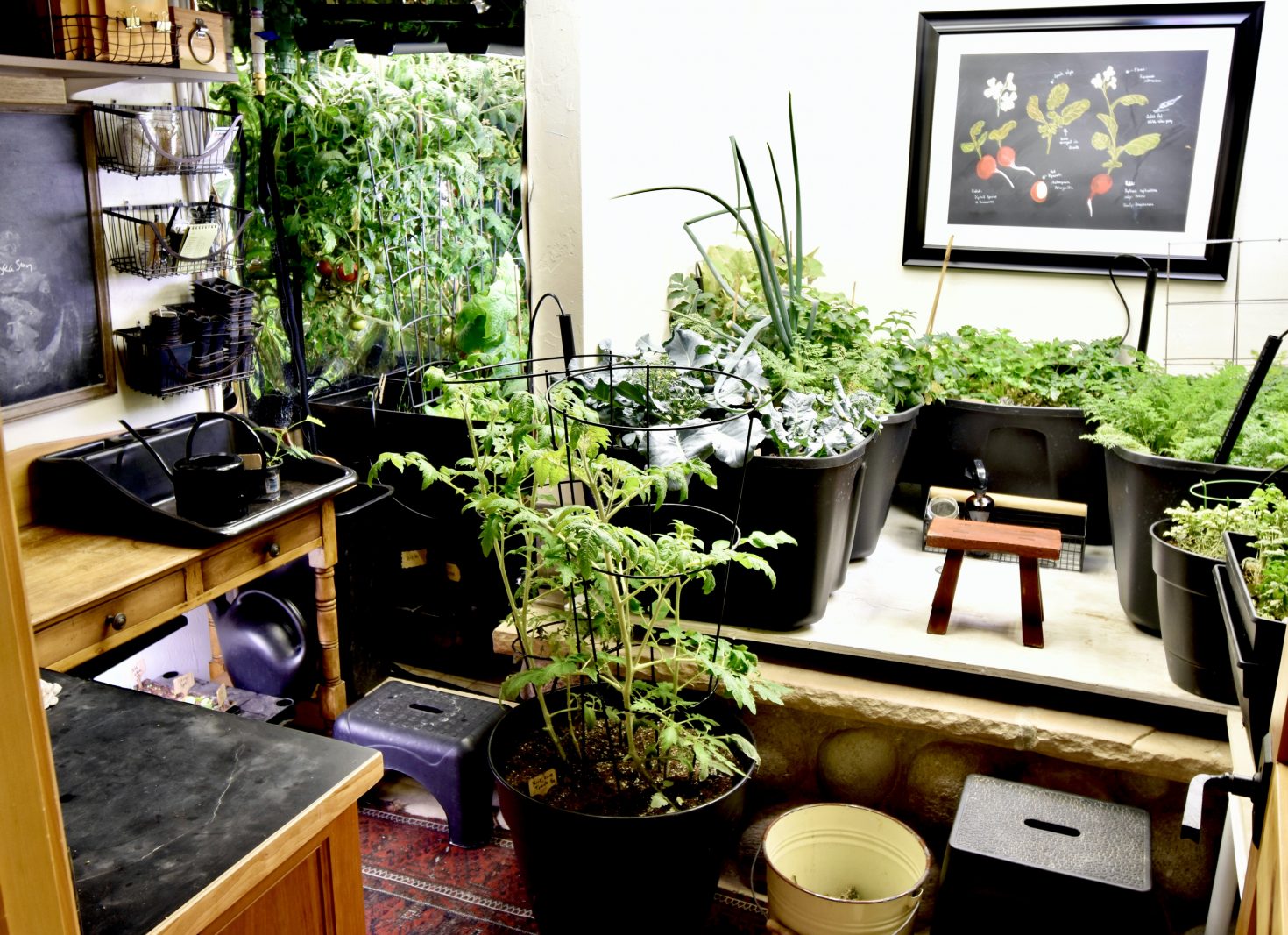
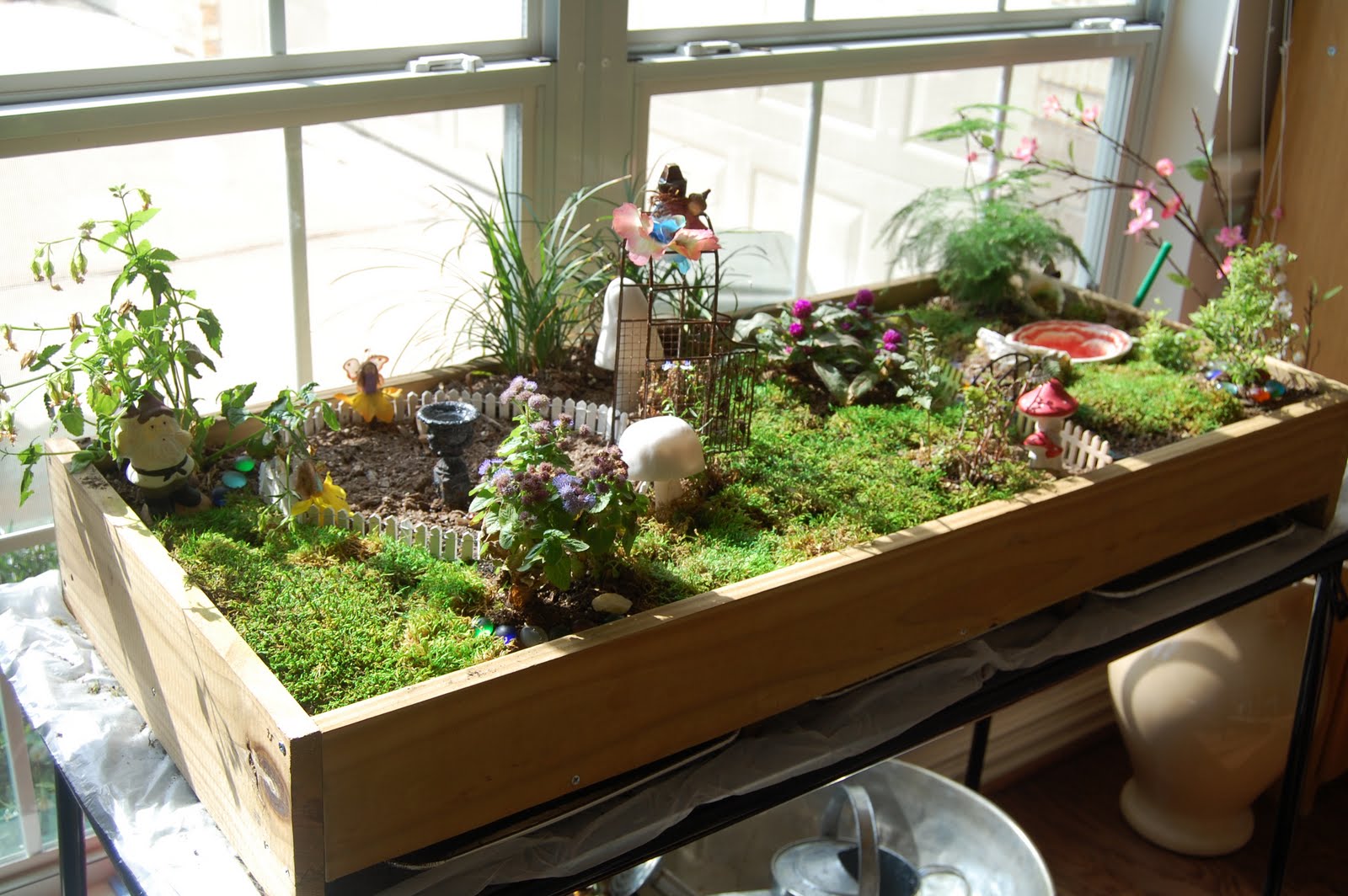
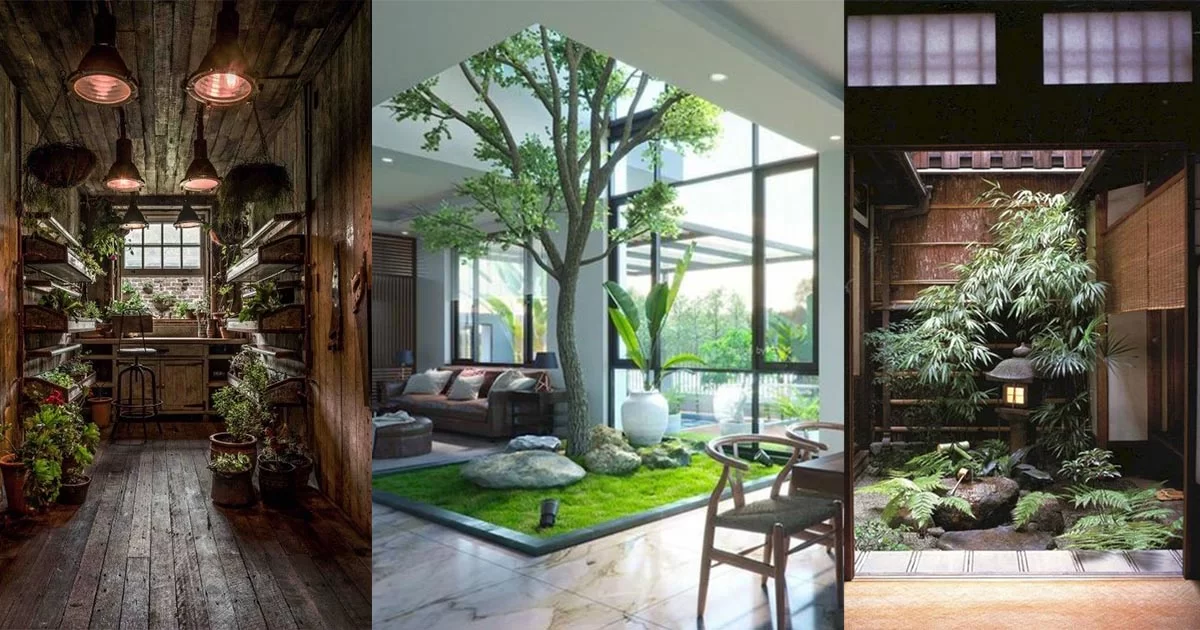
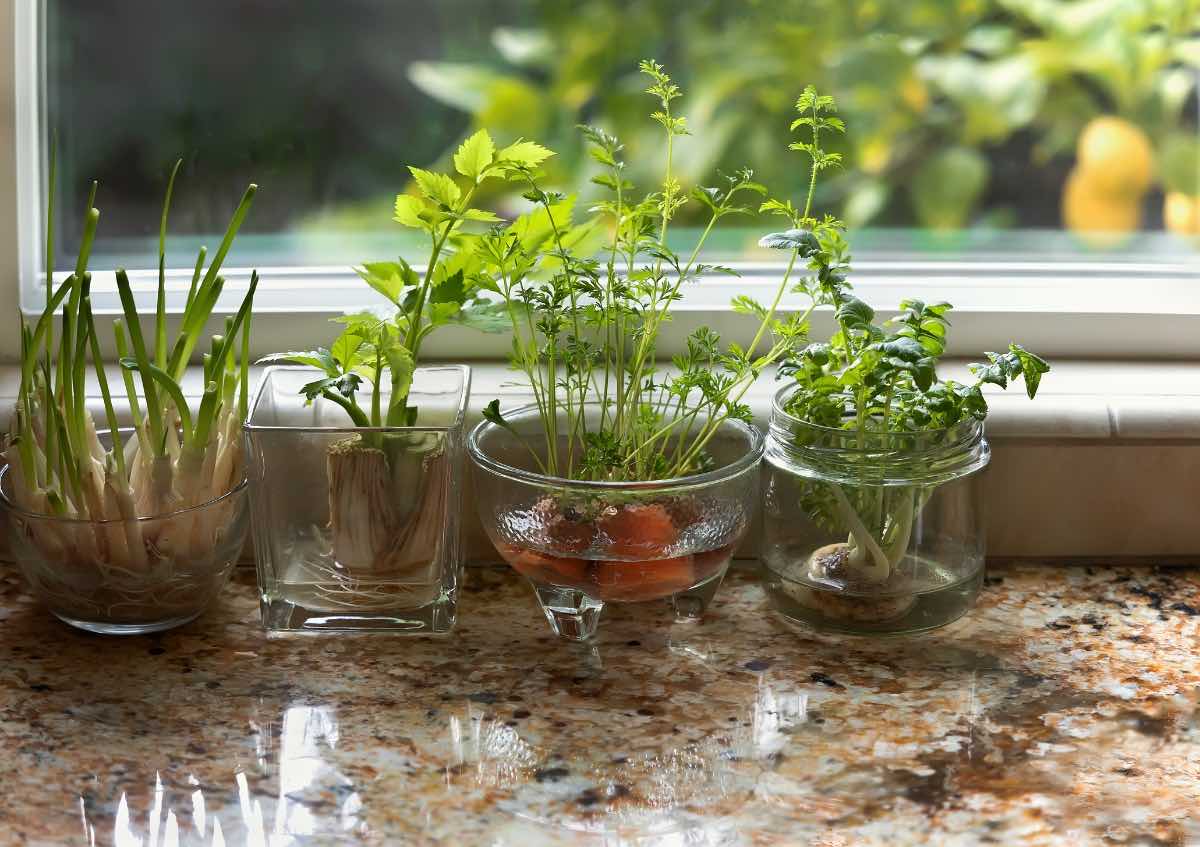
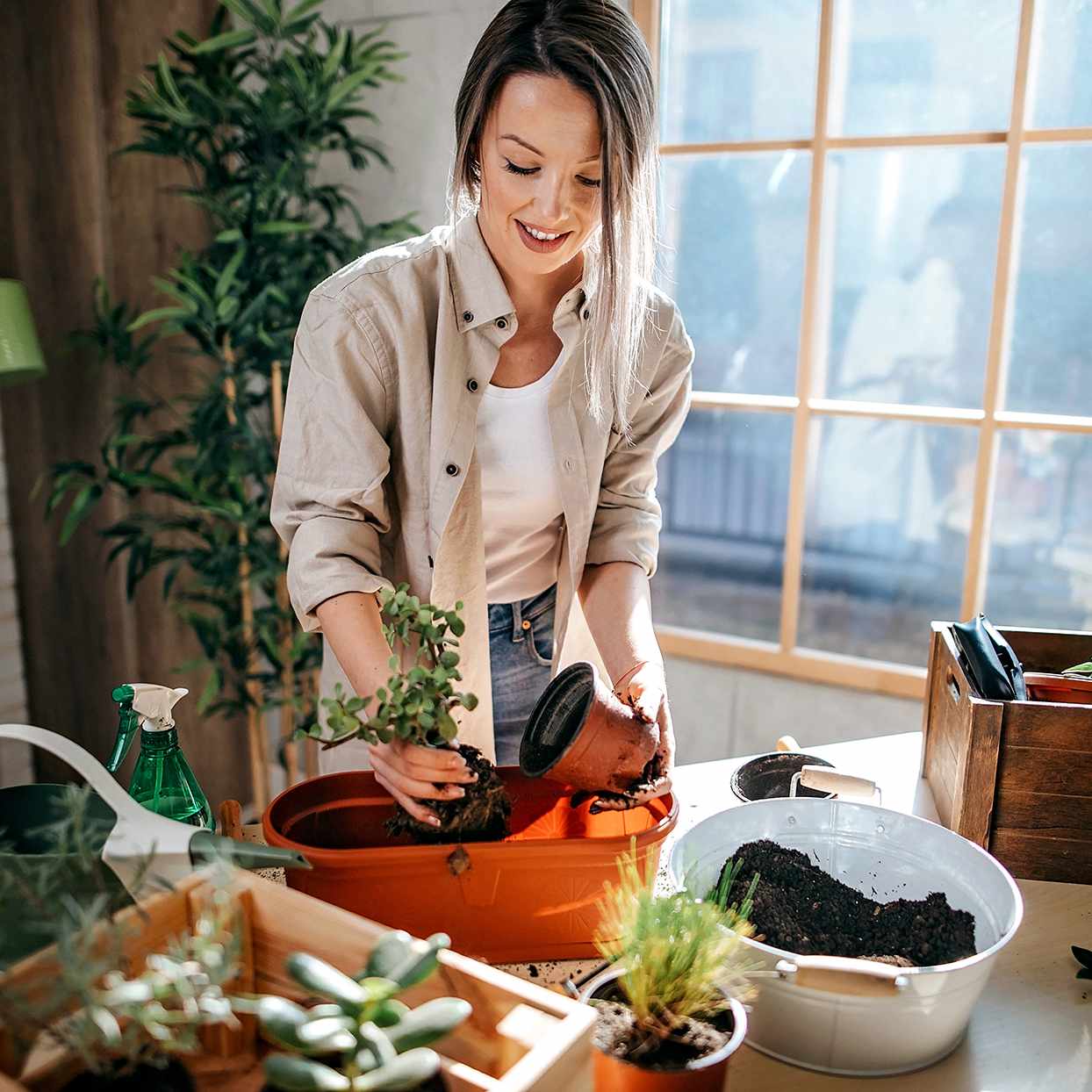
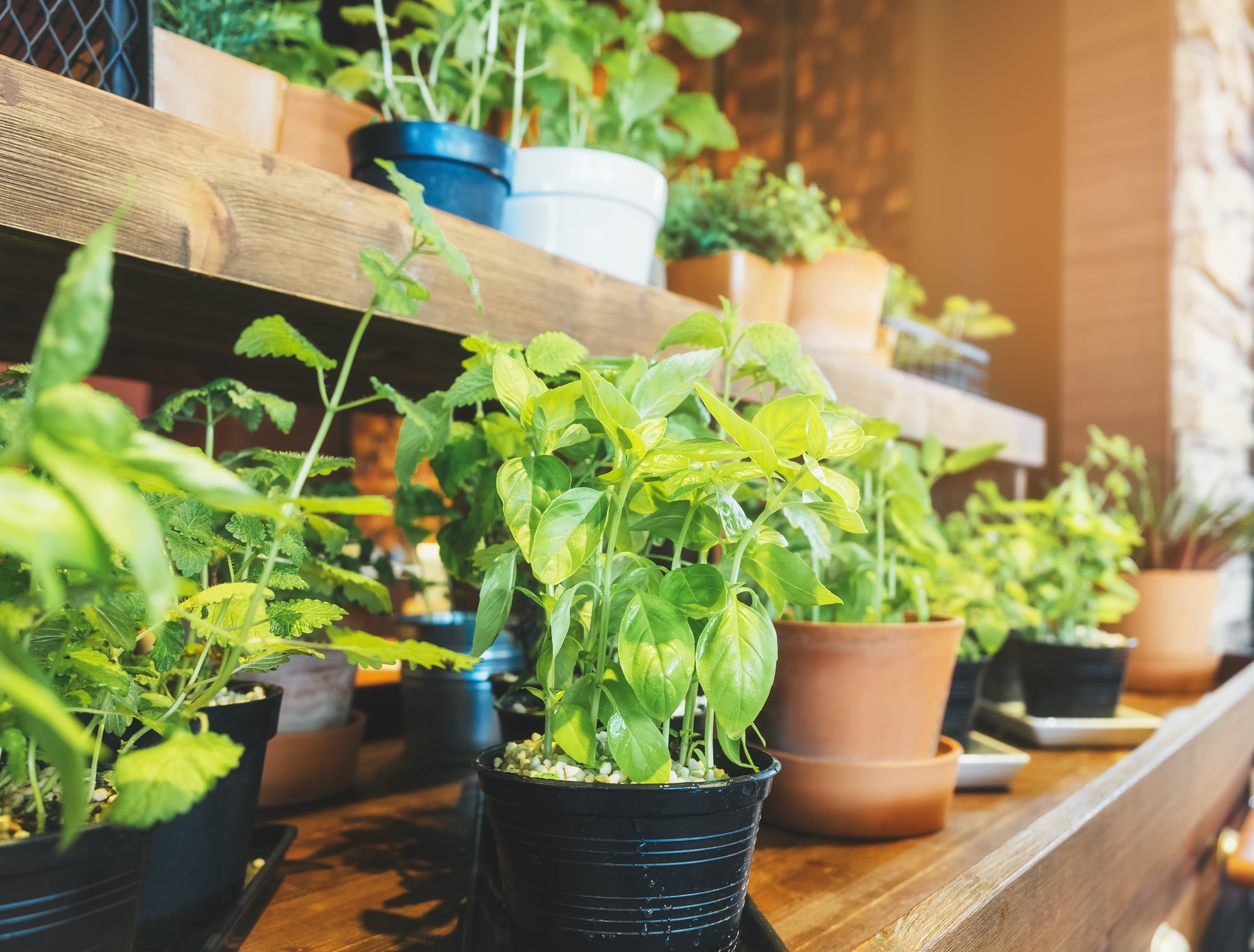
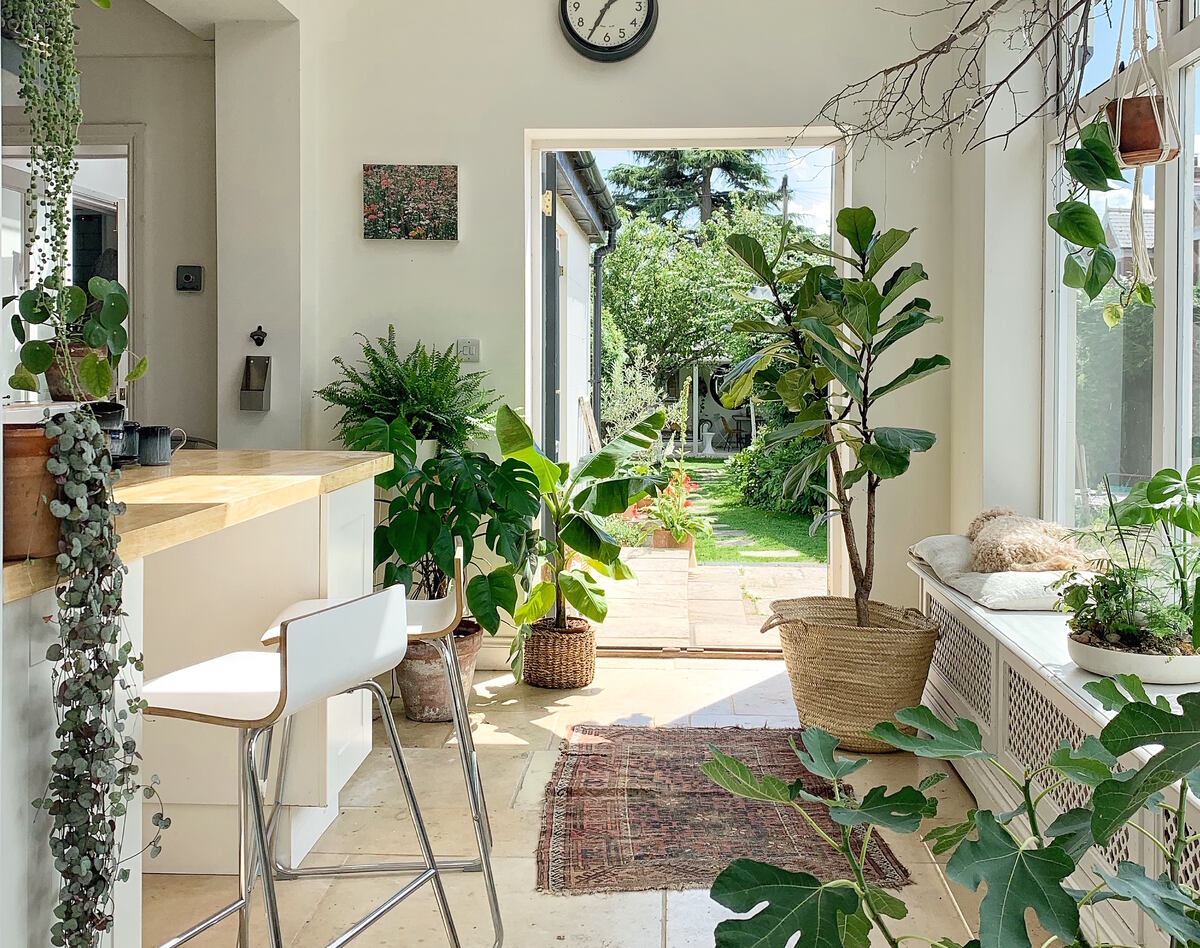
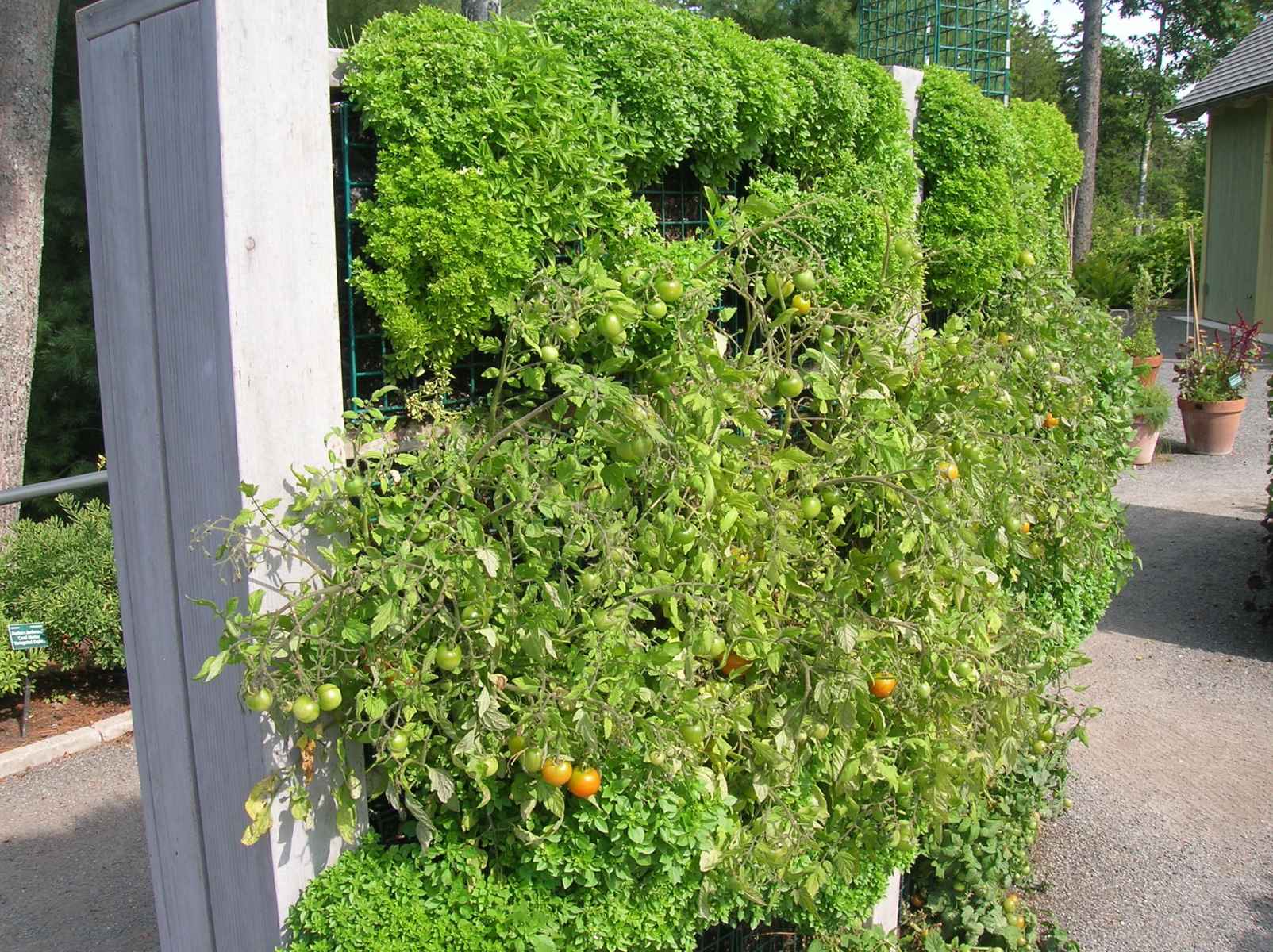

0 thoughts on “How To Grow Indoor Garden”